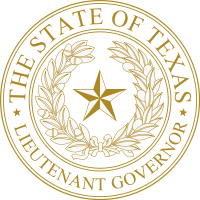Beauford H. Jester
| Beauford Halbert Jester | |
|---|---|
 | |
| 36th Governor of Texas | |
|
In office January 21, 1947 – July 11, 1949 | |
| Lieutenant | Allan Shivers |
| Preceded by | Coke R. Stevenson |
| Succeeded by | Allan Shivers |
| Member of the Texas Railroad Commission | |
|
In office January 1, 1943 – January 21, 1947 | |
| Governor | Coke R. Stevenson |
| Preceded by | Jerry Sadler |
| Succeeded by | William J. Murray |
| Personal details | |
| Born |
January 12, 1893 Corsicana, Texas |
| Died |
July 11, 1949 (aged 56) Houston, Texas |
| Resting place | Oakwood Cemetery, Corsicana, Texas |
| Political party | Democratic |
| Spouse(s) | Mabel Buchanan |
| Profession | Politician |
| Military service | |
| Allegiance |
|
| Service/branch |
|
| Years of service | 1917–1918 |
| Rank | Captain |
| Battles/wars | World War I |
Beauford Halbert Jester (January 12, 1893 – July 11, 1949) was the 36th Governor of Texas, serving from 1947 until his death in office in 1949. He is the only Texas governor ever to have died in office. Jester was a veteran of World War I and known for reforms of prisons and the educational system of the state.
Early life, education, and marriage
Jester was born in 1893 to George Taylor Jester and his wife in Corsicana, Texas, the seat of Navarro County in east Texas. He attended local segregated schools. Jester attended the University of Texas at Austin, then also segregated, where he was a member of the Kappa Sigma fraternity. He married Mabel Buchanan after graduation.
Jester later studied law at Harvard in Cambridge, Massachusetts. His studies were interrupted by the First World War. After the United States entered World War I, he joined the US Army, eventually achieving the rank of captain, and serving from 1917-1918.
In 1919, Jester resumed his law studies at the University of Texas, from which he received his LL.B a year later.
Law career
He returned to Corsicana to practice law. There, he also served as president of the Navarro County Bar Association for many years. Jester also served as director of the state bar association from 1940-1941.
For many years, Jester was a member of the University of Texas Board of Regents. From 1933-1935, he was the youngest man to ever serve as president of that body.
Political career
A Democrat, Jester first won statewide elective office in 1942, when elected to the Texas Railroad Commission. He served until January 1947.
He decided to run for governor, winning the Democratic primary in a run-off election in 1946 by defeating Homer Rainey. The latter had been discharged by the regents as the president of the University of Texas at Austin in 1944 in a dispute over academic freedom. As there was no substantial Republican Party in the state, Jester was unopposed for the governorship. Most African Americans and many Hispanics were still disenfranchised by barriers to voter registration that had been instituted at the turn of the century.
As governor, Jester created the Board of Texas State Hospitals and Special Schools, the Texas Youth Development Council, and reformed the state prison system. He also increased funding for state hospitals and orphanages, enacted strong right-to-work laws, and supported an antilynching law.[1]
Jester was easily re-elected to a second term in 1948. He helped implement the most extensive education reforms in the state through the 1949 Gilmer-Aiken Act, the first comprehensive system for Texas school funding.
He is the only Texas governor to have died in office. He died unexpectedly of a heart attack on a train, with his mistress by his side.[2] Jester's body was returned to his hometown of Corsicana, where he is interred in Oakwood Cemetery.[3]
Legacy and honors
- In the 1950s, the Texas Department of Corrections complex of prisons, the Jester Prison Farm, was named after Jester to honor his efforts at prison reform.
- In 1964, Jester Park was dedicated by the City of Corsicana in memory of Beauford Jester. The 24-acre (97,000 m2) park is home to the Lefty Frizzell Memorial and the Pioneer Village, which recreates the lives of the city's pioneers with replicas of historic buildings.
- In 1968, the Jester Center on the University of Texas campus was named after him. This contains Jester Dormitory, the largest college residential facility in the world, housing just under 3,000 students, as well as classroom and faculty space.
- Land formerly owned by Jester in the Hill Country just west of Austin (now incorporated into Austin) was developed as "Jester Estates", a neighborhood now of about 1000 homes. The two major streets entering the neighborhood are Beauford Drive and Jester Boulevard. The neighborhood runs along a ridge of the Balcones Plateau, and is surrounded on three sides by protected endangered-species habitat.
References
- ↑ "Corsicana’s Beauford Jester, Governor", by Dr. Tommy Stringer, Corsicana Daily Sun, 7 December 2008.
- ↑ Communications, Emmis (January 1986). Texas Monthly. Emmis Communications.
- ↑ Texas State Historical Association
Further reading
- Entry for Beauford Jester from the Handbook of Texas Online.
- Photos of Beauford H. Jester, hosted by the Portal to Texas History
- Jester Park
| Political offices | ||
|---|---|---|
| Preceded by Coke R. Stevenson |
Governor of Texas January 21, 1947 – July 11, 1949 |
Succeeded by Allan Shivers |
| Preceded by Jerry Sadler |
Texas Railroad Commissioner 1943–1947 |
Succeeded by William J. Murray |

